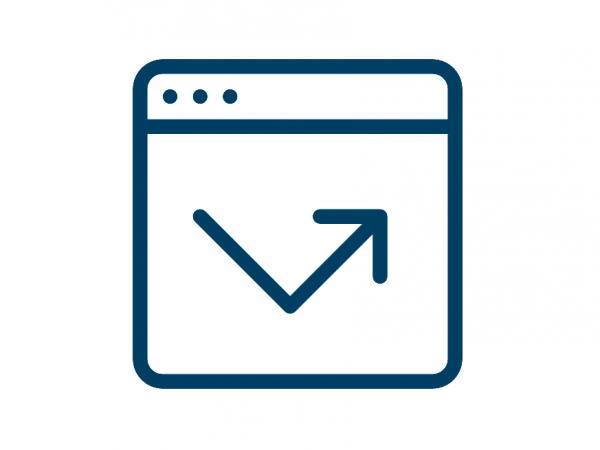Bounce rate is an indicator of how “sticky” your website is. A high bounce rate means that users generally come to a specific page, read or don’t read that single page, and then close your page.
A high bounce rate can be a sign that people are leaving your site (or a certain page) because they aren’t finding what they are looking for.
BUT: If a user opens the first page, studies it for 5 hours, and then closes the page – this also counts as a bounce.
If a user clicks anywhere on their first page, to head off to another page, this does not count as a bounce.
Example:
- 8 users find page A, and between them: leave immediately, read the page for 10 seconds, and read the page for 10 minutes, then exit
- 2 users find page A, and then click on some link in the page
This translates to an 80% bounce rate.
Interpreting bounce rate
So a high bounce rate is bad? And a low bounce rate is good?
Well, this depends.
If you have a single-page site like a blog, where you expect users to find your content, read it, and exit, then a high bounce rate is normal. More questions to ask on this:
- How long is your article length, and are customers reading your article in full? This answer is not fully answered by “Average Session Duration” numbers. However, assuming these numbers were perfectly reliable, if your article is a 3-minute read, and reliable average session duration numbers are 3 minutes, you’re doing well. It’s telling you that your page is a) leading users to useful content, and b) the content is interesting enough for them to stick around and consume it
- Are you at risk of leaving valuable “Google clicks value” on the table? Firstly your website users are curious about acquiring knowledge, otherwise, they would not be accessing your site. Given that this subset of users has identified themselves as curious, they segment into two. Segment 1 – the execution machines: those who are disciplined and business-like. And segment 2 – the explorers: those who have bandwidth and value learning more. A good website will meet these “explorers”‘ needs, providing the opportunity to continue piquing and satisfying the curiosity of segment 2 with more relevant information. Remember, these clicks are the indicators and engine room of good SEO – more info on this here.
If, however, the success of your website depends on users viewing more than one page, then, yes, a high bounce rate is bad. For example, your home page is the gateway to the rest of your site (e.g., news articles, product pages, your checkout process). With a site like this, your objective is to land these potential customers, then move them down the conversion funnel. If a high percentage of users are only viewing your home page, and not descending into the sales funnel, then you do have a bounce rate problem.
What is a good bounce rate?
Again, this depends. If you have a blog, news or events etc. website, then 70 percent plus is not shameful.
As a rule of thumb, a bounce rate in the range of 26 to 40 per cent is excellent. 41 to 55 percent is roughly average. 56 to 70 percent is higher than average, but may not be cause for alarm depending on the website. Unless you are a blog, news or events site, 70 percent plus is disappointing and hints at a website problem.
Improving bounce rate
- Speed up page load time (not forgetting mobile) – this is the easiest to measure, and potentially easiest to improve
- Make posts friendly, and not intimidating: front load your posts with easy info: images, bullet points, simple concepts
- Be sparing in use of sales and distracting sidebar widgets / call-to-action promotions
- Don’t “false advertise”: ensure your keywords and snippets that lure users in from Google search results are consistent with your page’s content
- Think hard about what you want the user’s second click to be, and focus on that – for example a single, clear call to action
- Empower users to click next: make your site easy to search, so users can serve themselves content
- Basics: good UX – make your site’s navigation effortless
For more detailed articles on above: what’s the average bounce rate for a website, and 11 ways to reduce your bounce rate









